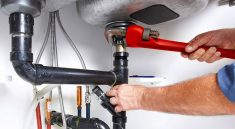Fire risk assessment is a critical aspect of ensuring the safety of buildings and occupants. With advancements in technology, there is a wide range of tools and technologies available to enhance the accuracy and efficiency of fire risk assessments. In this guide, we’ll explore some of the key tools and technologies used in fire risk assessment and how they contribute to improving safety standards.
Through meticulous examination and analysis, our fire risk assessments provide invaluable insights into fire safety measures. By identifying vulnerabilities and recommending improvements, we help businesses and homeowners enhance their fire prevention strategies.
Utilizing Technology for Fire Risk Assessment
Technology has revolutionized the field of fire risk assessment, offering innovative solutions to identify potential hazards, evaluate safety measures, and mitigate risks effectively. The following are some of the essential tools and technologies used in modern fire risk assessment:
1. Fire Modeling Software
Fire modeling software utilizes advanced algorithms and simulations to predict fire behavior, smoke propagation, and evacuation scenarios within a building. By inputting building geometry, materials, and occupancy data, fire modeling software can generate realistic simulations to assess fire risks and optimize safety strategies.
2. Thermal Imaging Cameras
Thermal imaging cameras detect heat signatures invisible to the naked eye, allowing firefighters and safety inspectors to identify hotspots, electrical faults, and other potential fire hazards. These cameras are invaluable tools for conducting thorough inspections and identifying hidden dangers in buildings.
3. Automated Fire Suppression Systems
Automated fire suppression systems, such as sprinkler systems and fire suppression agents, utilize sensors, detectors, and actuators to detect and suppress fires automatically. These systems provide rapid response to fire incidents, minimizing damage and protecting occupants before the arrival of emergency responders.
4. Remote Monitoring Systems
Remote monitoring systems allow building managers and safety professionals to monitor fire detection and suppression systems remotely, receive real-time alerts, and respond promptly to fire emergencies. These systems enhance situational awareness and enable proactive management of fire risks.
5. Building Information Modeling (BIM)
Building Information Modeling (BIM) software enables architects, engineers, and construction professionals to create detailed digital representations of buildings, including structural components, mechanical systems, and fire safety features. BIM facilitates collaboration, visualization, and analysis throughout the building lifecycle, improving fire risk assessment and safety planning.
Benefits of Fire Risk Assessment Tools and Technologies
- Enhanced Accuracy: Advanced tools and technologies provide accurate data and simulations, enabling more precise identification and assessment of fire risks.
- Improved Efficiency: Automation and remote monitoring streamline the fire risk assessment process, saving time and resources for building owners and safety professionals.
- Optimized Safety Measures: By leveraging data-driven insights, building owners can implement targeted safety measures to mitigate identified risks effectively.
- Compliance with Regulations: Utilizing state-of-the-art tools and technologies helps ensure compliance with safety regulations and standards, reducing legal liabilities and reputational risks.
Conclusion
In conclusion, fire risk assessment tools and technologies play a crucial role in enhancing the accuracy and efficiency of safety practices in buildings. From fire modeling software and thermal imaging cameras to automated suppression systems and remote monitoring solutions, these innovative tools empower safety professionals to identify, assess, and mitigate fire risks effectively. By leveraging technology, building owners can optimize safety measures, ensure compliance with regulations, and protect the well-being of occupants and assets. Investing in advanced fire risk assessment tools and technologies is essential for maintaining high safety standards and mitigating the potential impact of fire incidents.





